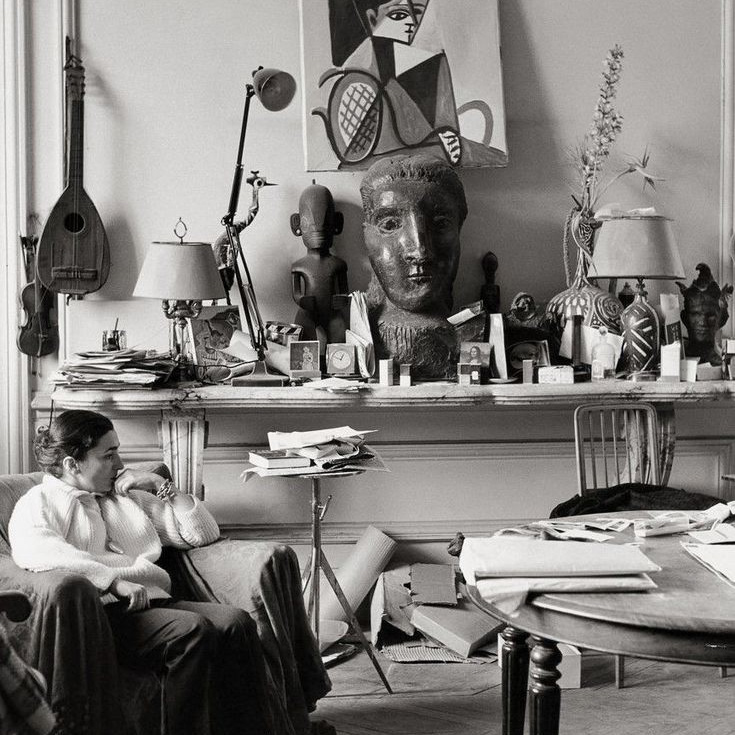By 2030, low-vision and blind individuals will have the necessary tools to navigate the art consumption experience with the same level of depth as those with vision.
The integration of technology in aiding those with disabilities has been a topic of interest for decades, with a focus on enhancing accessibility and inclusivity. For blind and visually impaired individuals, navigating the world, whether in daily life or specialised environments like museums, presents unique challenges. With over 80% of individuals with low-vision stating that they would visit museums if they were more accessible, it’s clear to see that a significant percentage of the population is denied avenues to appreciate art (Evelity, n.d.).
Over the years, numerous solutions have been proposed to bridge this gap, ranging from tactile exhibits to advanced AI-powered tools. This article explores the evolution of products designed to assist the blind, with a focus on AI solutions like Seeing AI, examines their shortcomings, and considers the next steps in this rapidly evolving field.
The journey of creating accessible solutions for the blind began with relatively simple tools designed to enhance their interaction with the environment. One of the earliest iterations of such an experience was the introduction of tactile exhibits in museums. For example, in 1993, the Omero Museum was opened to offer a new art-appreciation experience for low-vision individuals. Based in Italy, the museum created direct copies of classic works and allowed attendees, even those with vision, to experience contemporary to Renaissance art work.
“The traditional prejudice that art is linked only to the function of seeing falls away, and the concreteness of the relationship with nature, which is based on all the senses and not only on sight, is rediscovered.” - Aldo Grassini, Omero Museum President (Zebra, 2015).
A noteworthy advancement came with the introduction of audio guides, specifically tailored for blind visitors. These guides, equipped with detailed descriptions of the exhibits, aimed to create a more immersive experience. While they offer a great solution in including blind individuals within the art experience, it still only deals with the realm of descriptive narration. In this sense, the art can only be consumed in a shallow method, rather than a more complex and interpretive method.
With the advent of artificial intelligence, the landscape of accessibility tools for the blind has seen a dramatic transformation. One of the most prominent AI-driven tools in this space is Microsoft’s Seeing AI (Perkins School for the Blind, 2022). This app, designed specifically for blind and low-vision individuals, utilizes computer vision to narrate the world around the user. By simply pointing their smartphone camera at an object, person, or text, users can receive instant information through audio about faces, documents, signs and even rooms.
Yet still, there is so much work to be done for it to be translate into practical use for day-to-day use. One of its primary drawbacks is the reliance on the smartphone camera. In essence, holding a cane combined with a smartphone pointing at everything (including other people) may feel too disruptive for those with low-vision. Its facial recognition software is good in theory, however in practice, it's highly unlikely that it will be used. Imagine the first thing you do when greeting someone is point a camera at them?!
So, what’s the future? When there are so many existing solutions at place in the present, and finding that the current solutions just don’t hit that sweet spot, it’s clear that there is more room to innovate for future designers. Ranging from Seeing AI to Durateq (a seemingly archaic solution from the mid 2000s), the range of solutions are mixed, from Jurassic to still embryonic.
With the rising popularity of Artificial Intelligence in all things technology, it’s fair to say that the experience of low-vision and blind individuals are about to dramatically change. The capacity for change is a beautiful one, and allows emerging technologies, like AI, to act as “The Great Equalizer.” (TEDx Talks, 2019).
“Accessible Design is good design - it benefits people who don’t have disabilities as well as people who do.” - Steve Ballmer
________________________________________________________
References
Evelity. (n.d.). Study on the accessibility of museums to visually impaired people.
https://blog.evelity.com/en/study-accessibility-museums
https://blog.evelity.com/en/study-accessibility-museums
Perkins School for the Blind. (2022, October 28). Microsoft seeing AI and low Vision Review
– Perkins School for the Blind. https://www.perkins.org/resource/microsoft-
seeing-ai-and-low-vision-review/
TEDx Talks. (2019, January 23). Using AI to transform the lives of the blind | Anirudh Koul |
TEDxSeattle [Video]. YouTube. https://www.youtube.com/watch?v=VtXRUTukjNU
Zebra, P. (2015, April 28). This is the First Museum Where Blind People Can See Art With
Their Hands - Indie88. Indie88. https://indie88.com/this-is-the-first-museum-where-
blind-people-can-see-art-with-their-hands/
Miro Board of Research

